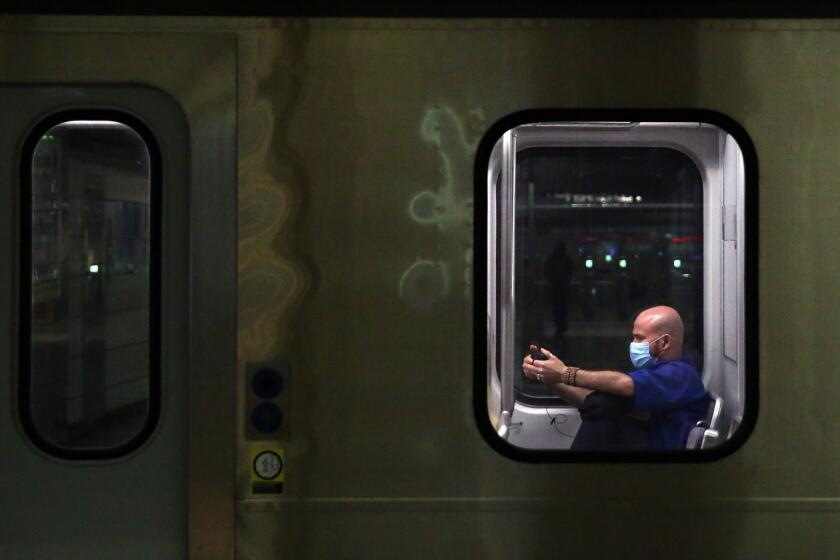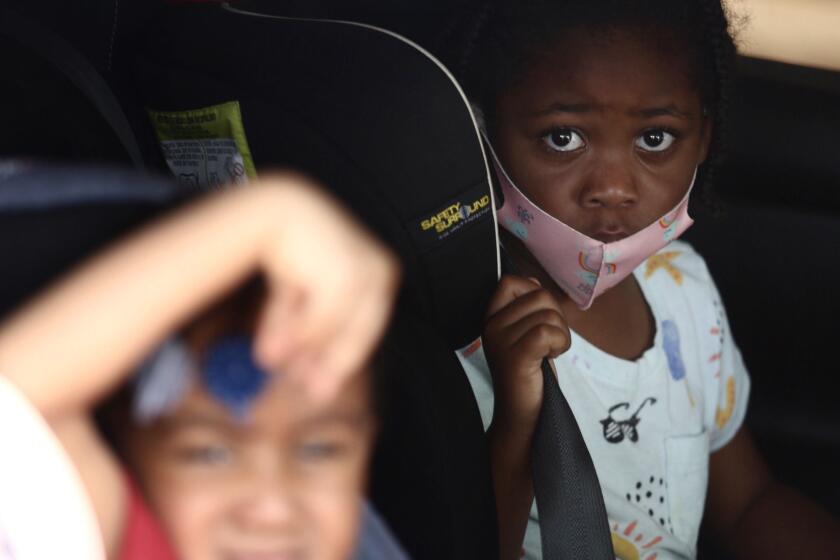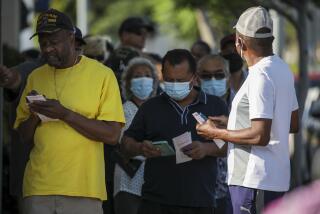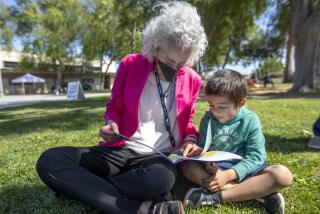California coronavirus-related deaths top 8,000 after record-high day
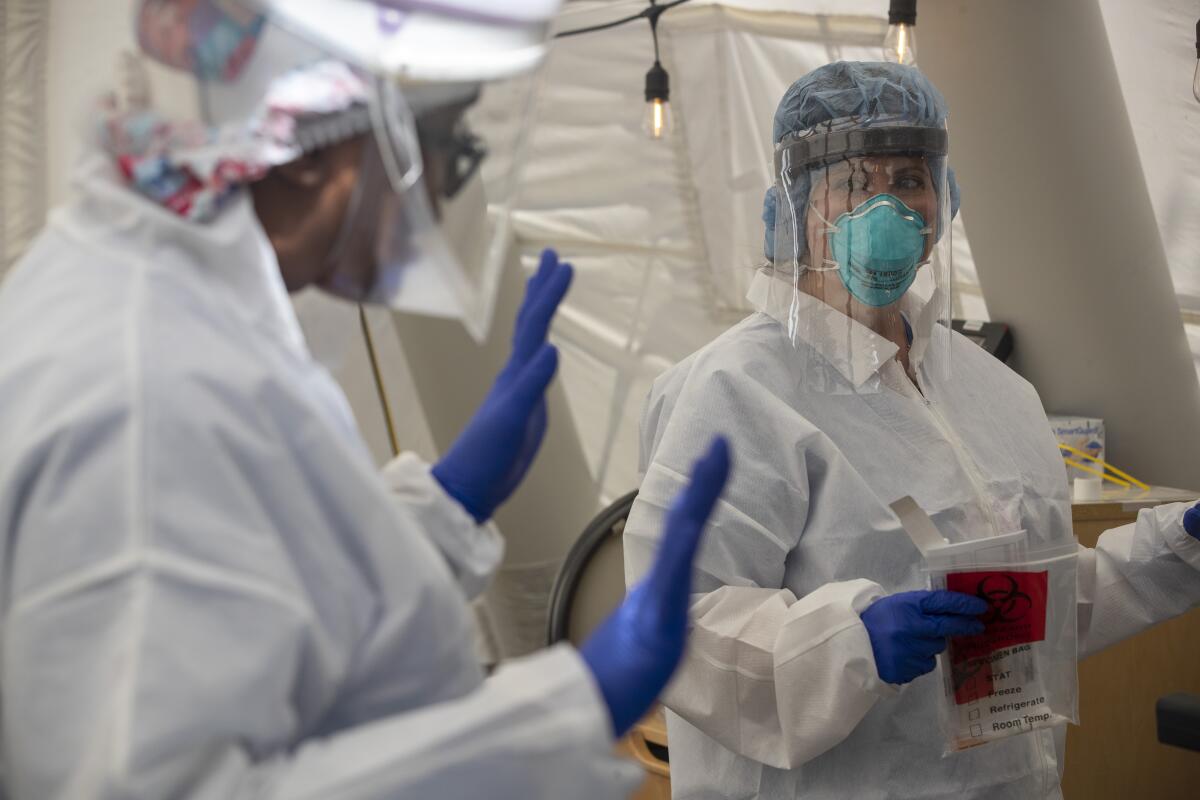
- Share via
California recorded the most coronavirus-related deaths in a single day amid a spike in infections that has pushed the state’s cumulative case count to the highest in the nation.
Wednesday’s 157 fatalities — the state’s highest one-day toll yet, according to The Times’ coronavirus tracker — pushed California’s fatalities above 8,000.
The sobering death toll continues what’s been an unprecedented week in California in terms of the COVID-19 outbreak.
Gov. Gavin Newsom said Wednesday afternoon that 12,807 new coronavirus infections had been reported statewide in the past 24 hours, a record high.
Gov. Gavin Newsom said Wednesday that 12,807 new coronavirus infections had been reported statewide in the past 24 hours — a record high.
More than 421,000 COVID-19 cases have been reported statewide over the course of the pandemic. That means roughly 1 in every 94 Californians has had a confirmed infection at some point.
Statewide, 7,170 confirmed COVID-19 patients were hospitalized as of Tuesday — also a new high and an increase of 18% from two weeks ago — with 2,058 people in intensive care, according to the state Department of Public Health.
“It’s just another reminder … of the magnitude of impact that this virus continues to have,” Newsom said during a briefing Wednesday.
However, both those numbers fell markedly in the latest available state data released Thursday, which showed that 6,825 COVID-19 patients were hospitalized and 1,978 were in intensive care as of Wednesday.
Los Angeles County continues to bear the brunt of the statewide surge, with more than 165,000 total cases and 4,200 deaths confirmed as of Thursday morning.
Later in the afternoon, county health officials announced 49 additional deaths and 2,014 new cases.
So severe is the outbreak that health officials said COVID-19 is on track to be the second-leading cause of death in the county.
From January to June, COVID-19 killed roughly 3,400 people, according to the county Department of Public Health. Over the same period last year, only coronary heart disease was attributed as the cause of more deaths, with nearly 5,800.
During the first six months of this year, COVID-19 also killed more than twice as many people in L.A. County as pneumonia and influenza did during the last flu season — which ran from October to May, health officials said.
“One of the reasons that we’re working so hard to flatten the curve and slow the spread of COVID-19 is to limit the strain on our healthcare system so that, when flu season arrives in a few short months, we’ll be able to contain and slow the spread of COVID-19 while we know that our hospitals will also need to care for people with influenza,” county Public Health Director Barbara Ferrer said Wednesday.
Los Angeles is far from the only county that’s seeing high levels of coronavirus activity.
Kern County reported 1,135 new COVID-19 cases Thursday — its second straight day in quadruple digits following Wednesday’s tally of 1,120, according to The Times’ tracker. The past two days alone account for roughly 18% of the county’s total confirmed cases.
In San Bernardino County, officials announced 21 new deaths Thursday, matching the most reported in a single day and bringing the total number of fatalities to 358.
California topped New York in coronavirus cases. What is unknown is if the Golden State is on a path to have its hospitals overwhelmed
Throughout the pandemic, officials have preached the importance of flattening the curve — holding the rate of new infections in check — so that the healthcare system isn’t overwhelmed.
However, experts say hospitalization and death totals reflect exposure to the virus that occurred weeks ago, so it takes time to see how behavioral changes are affecting transmission, and whether measures implemented to stem the spread of the disease are working.
“I think we started to exit shelter-in-place sometime around Memorial Day both emotionally and physically. And we are paying the price for that,” said Nicholas Jewell, a biostatistics authority at UC Berkeley. “It’s like we should be tiptoeing out on the ice. What we did, instead, was all run out on the ice, some not too cautiously. And a lot of people fell through the ice.”
California Health and Human Services Secretary Dr. Mark Ghaly said it could take three to five weeks to see the full impact of measures the state has taken recently — including issuing a universal face mask order on June 18 and renewing restrictions on numerous activities and businesses last week.
Some, though, contend that the situation calls for swifter, more far-reaching action. Among those is State Sen. Steve Glazer (D-Orinda), who has called for Newsom to reimpose stay-at-home policies in most of the state until the outbreak is under control.
Specifically, the Bay Area lawmaker has proposed that counties return to sheltering in place — meaning their residents would be required to stay home except for essential work or trips — if they have a positive test rate greater than 2% over the past 14 days.
The statewide positivity rate over the last 14 days is 7.6%.
Ferrer has previously said that “nothing can be off the table in the pandemic” but that she personally hopes “we don’t have to go back” to those kind of restrictions in Los Angeles County.
L.A. Mayor Eric Garcetti — who also has raised the specter of potentially reimposing some type of stay-at-home order if conditions continue to deteriorate — said Wednesday that, though the COVID-19 threat level remains at orange, or high risk, the city is “not moving to red and we are not closing any additional businesses or activities.”
He added that the virus case positivity rate had declined slightly for the first time in several weeks, from a seven-day average of 13.6% last week to 10%.
“Between the closures two weeks ago and the renewed vigilance that I am certainly feeling across the city, we’ll know in the next week or so — together, guided by our county health department, by the data — where we are and where we’re moving,” he said.
Health officials continue to emphasize that personal decisions are just as important as policies. Residents and business owners need to continue taking the steps necessary to protect themselves, their customers and those around them— including physical distancing, wearing cloth face coverings and practicing good hand hygiene.
“We’ll get to the other side of this soon enough, but it will, again, take all of us and all of our businesses to do,” L.A. County Health Officer Dr. Muntu Davis said Thursday.
County officials unveiled a tiered enforcement plan to potentially cite and fine businesses that violate the county’s coronavirus health orders.
Starting at the end of August, noncompliant businesses will face fines ranging from $100 for a first offense to $500 and a 30-day permit suspension for multiple offenses.
Last weekend, county inspectors visited 507 restaurants, 69 hotels and 174 residential pools and found that the vast majority of them were complying with relevant rules, according to Davis.
“We want to be reasonable and work with businesses, but we also know that time is of the essence to slow the spread of this virus and protect our residents’ health,” he said.
Times staff writers Alejandra Reyes-Velarde and James Rainey contributed to this report.
More to Read
Sign up for Essential California
The most important California stories and recommendations in your inbox every morning.
You may occasionally receive promotional content from the Los Angeles Times.
